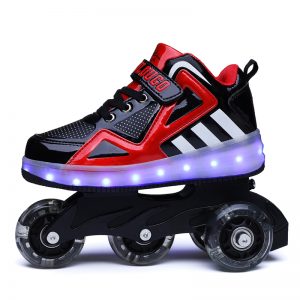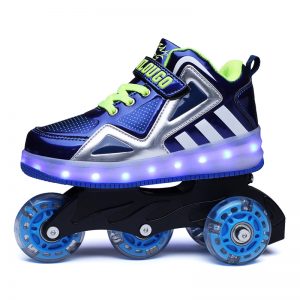Before skating, let your child wear protective gear, including helmet, knee pads, elbow pads and gloves. The protective gear not only protects the baby, but the most important thing is that he can feel safe for the baby, so he can let go of his hands and feet, not afraid of falling, and be brave to learn. Of course, if parents can master the skills of skating to guide their babies, they can learn faster and better. Below, our skating wheel manufacturer briefly explains the precautions for children skating:
1. Wear protective gear: Before skating, let your child wear protective gear, including helmet, knee pads, elbow pads and gloves. The protective gear not only protects the baby, but the most important thing is that he can feel safe for the baby, so he can let go of his hands and feet, not afraid of falling, and be brave to learn. Advise your baby to bend over, bend his legs, and move his weight forward. If he slips, he should also fall forward, so that he won’t be able to fall his tailbone, so he can learn to protect himself.
2. Wear roller skates: In beginners, let your baby wear shoes by himself. The laces of the first two or three buttonholes can be tied a little loosely, and the laces at the back should be fastened tightly and the ankles should not move in the shoes. Tilt to the sides and kick the ice hard. Beginner babies should wear long-sleeved clothes and gloves to avoid scratching their skin when they fall. The thickness and tightness of the clothing should not hinder the movement.
3. Learn the correct standing posture from the beginning. Separate your feet slightly, about shoulder-width apart, turn your toes slightly outward to form a small figure eight, bend your legs slightly, lean your upper body slightly forward, and look straight ahead. The center of gravity of the body should be steadily pressed onto the blade through the feet, and the ankle joint should not fall inward or outward.
4, practice making. Stand on the field after putting on your skates, try to keep your balance, and always slide counterclockwise. Do not slide at high speed, do not chase or tease, and do not wear professional running knives on the ice without consent. If you have the conditions, you can ask the coach for guidance. Every time you practice, you should rest for 2 to 3 minutes every 10 to 15 minutes. When you are tired, you should take off your skates and relax your calf and foot muscles. It is normal to have muscle tension and soreness in your legs after the first time on ice. After a few exercises, this feeling will disappear naturally.









